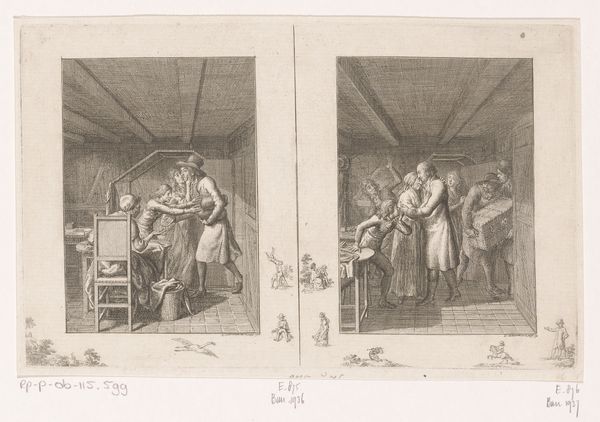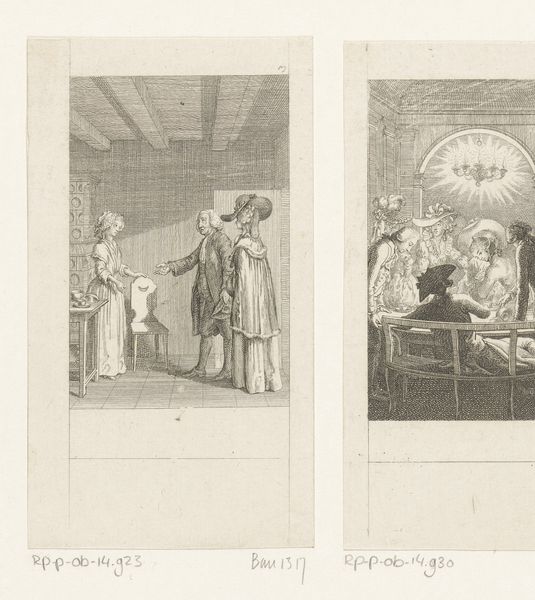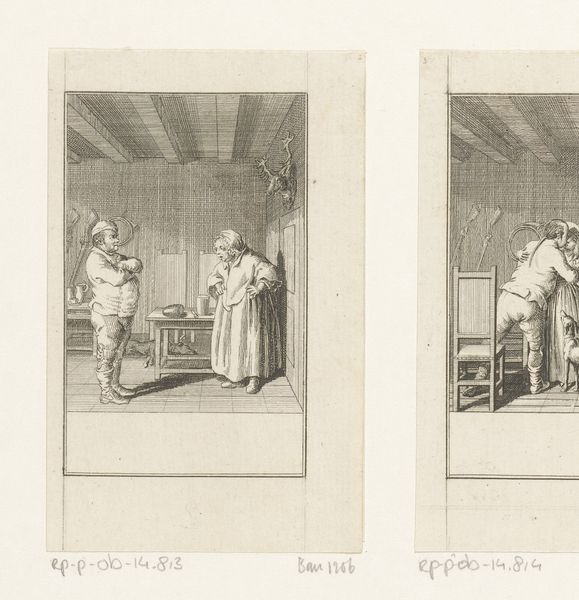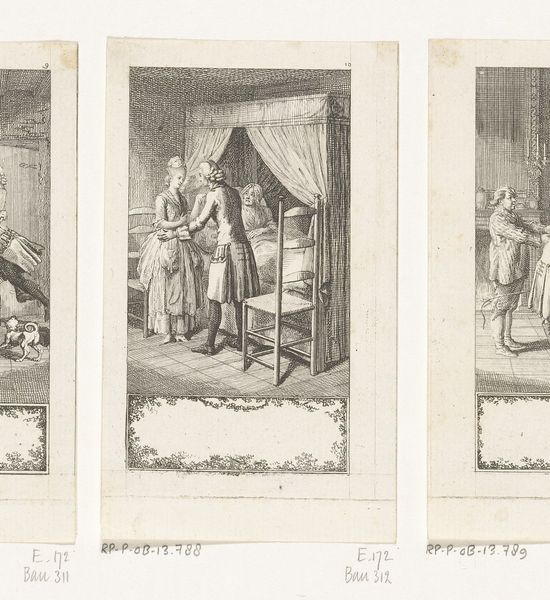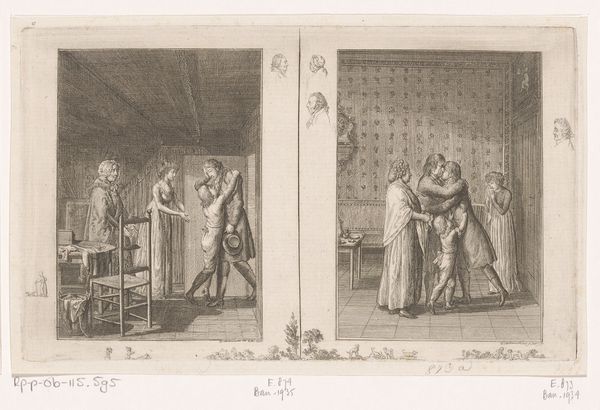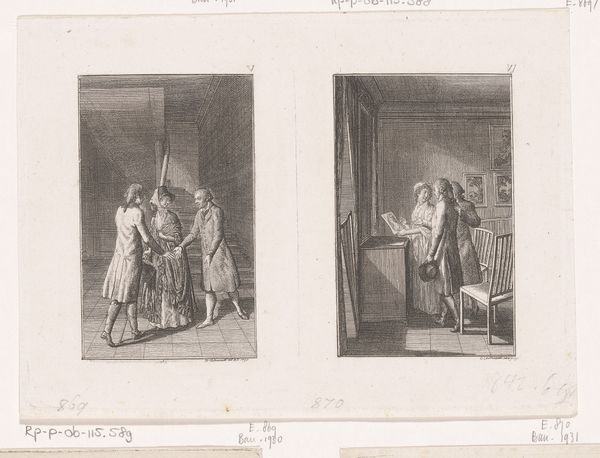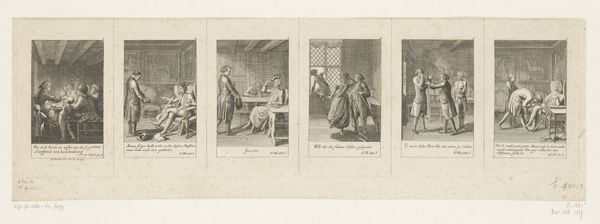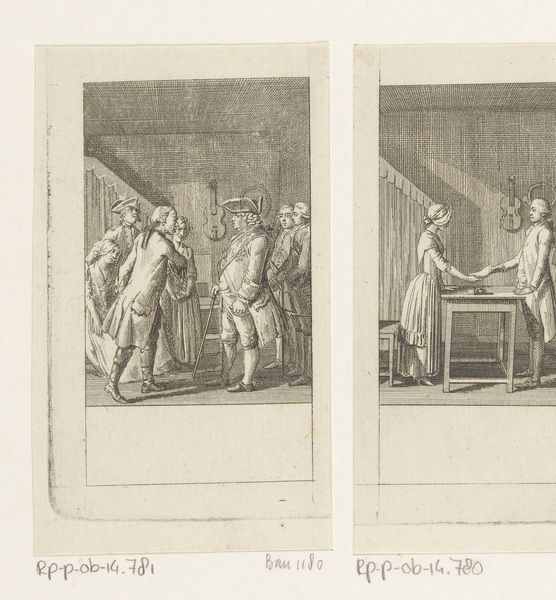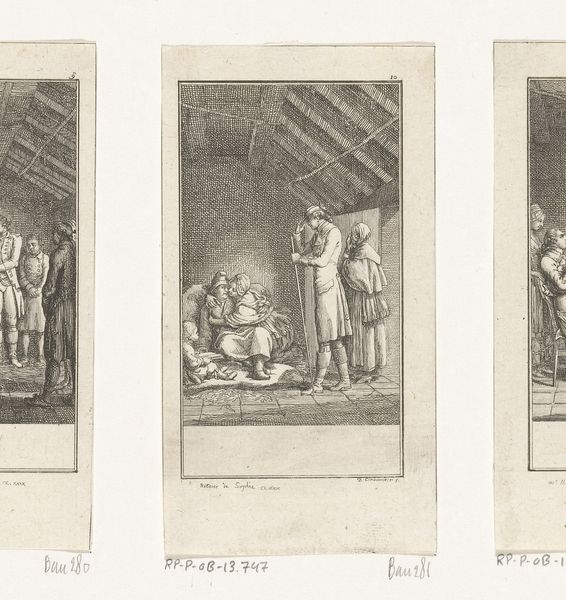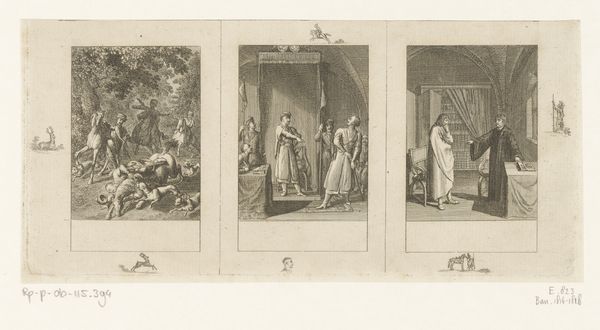
Twee voorstellingen uit Familie Hellmuth van Hiemer 1798
0:00
0:00
danielnikolauschodowiecki
Rijksmuseum
Dimensions: height 118 mm, width 196 mm
Copyright: Rijks Museum: Open Domain
Editor: Here we have "Two Scenes from the Hellmuth von Hiemer Family" created in 1798 by Daniel Nikolaus Chodowiecki, it is an etching. There are two distinct scenes. The left is quieter, more intimate. The right feels chaotic and crowded. What's your take? Curator: This print gives us a fascinating glimpse into the social fabric of the late 18th century. The two scenes presented side-by-side offer a comparative narrative. What strikes you about the depiction of family roles and rituals within the domestic space? Editor: Well, in the first scene it feels like some form of transaction is happening with a child involved and on the right a larger sendoff possibly? I’m just wondering what commentary Chodowiecki might be making through this depiction? Curator: Precisely! Chodowiecki, known for his engagement with Enlightenment ideals, often used his art to explore social mores and power dynamics. This print can be viewed through the lens of family structure, inheritance, and perhaps even the anxieties surrounding social mobility in that period. The composition in the scenes could emphasize who holds the power, no? The visual arrangement often mirrored existing social hierarchies, influencing how the public perceived and internalized them. Editor: So, the print isn't just showing us what things looked like, but also commenting on how society was structured and how it worked? Curator: Exactly! It prompts us to think about the institutions, values, and power structures that shaped people’s lives and which continue to have an impact on the present. We may think about the role of museums in showing prints such as this one and in forming an image about everyday life of the past. Editor: That's incredible, I hadn't considered how actively prints could participate in shaping social consciousness. Curator: Art is very rarely neutral. Editor: It really puts a new perspective on prints from this era, thanks.
Comments
No comments
Be the first to comment and join the conversation on the ultimate creative platform.
